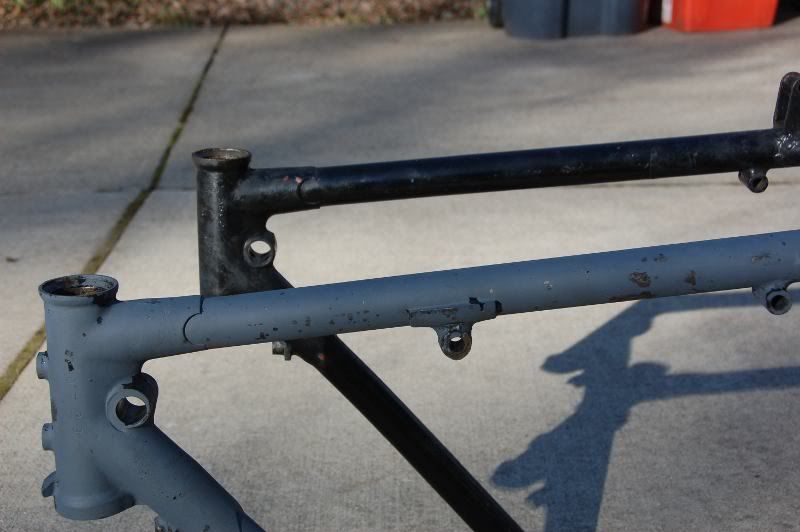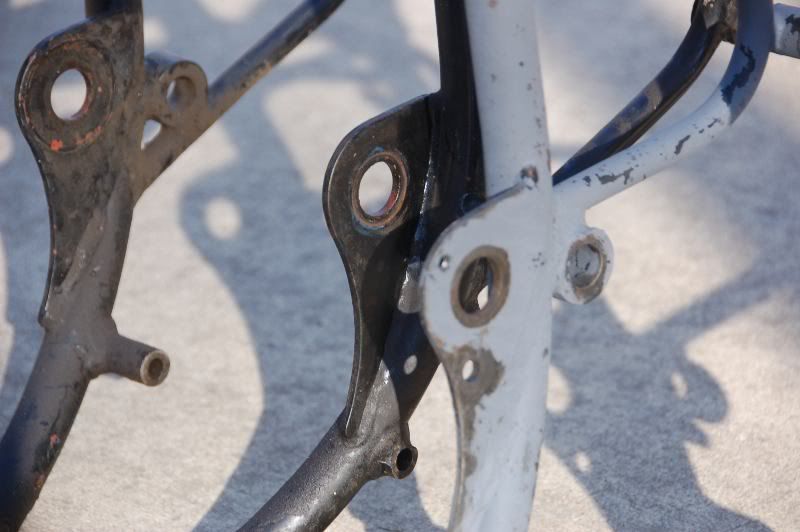I did a bit of clean up on the frames for my two Enfield twins, and decided to take pictures to show the difference between an Interceptor frame, and one set up for a 500 "Meteor Minor" engine.
Not trying to rain on any parades, but the fact that this was done in Redditch suggests that it's something that should be addressed for this type of conversion.
Here's a picture showing part of the frame backbone. Interceptor in the foreground with the lug for the head steady plates made of 1/8 or 5/32 inch steel. (to clarify; the plates are 5/32", the lug is cast iron)

Here's a closeup of the lug. Note that it's a fairly substatial casting, not just a piece of heavy gauge pipe welded to the frame. The 700cc frames undoubtedly also have these, since the cylinder heads on 700cc engines have the drilled holes for the plates to bolt to, while the 500 engine just has undrilled bosses inboard of the rocker boxes.

The other area that should be considered is at the swingarm mounting plates. This may only apply when using an Interceptor engine.
Here's the swingarm mounting plates for the Interceptor and the 500 frame. Note the extra holes. The small one near the swingarm bushing hole is for some "cheesehead" screws that prevent the swingarm nuts from backing out. Hitchcock's addresses this in the older bikes by selling nylon locking swingarm nuts.
The other hole is for the large aluminum piece that's bolted to the back of the trasnmission using extended length transmission mounting studs.

Here's the rear mount used on Interceptors.

This, plus the head steady would really triangulate the frame, and give it much greater fore-aft stability than frames without these items. Even just using the head steady has to help in that area, and I don't know why the 500 lacks the head steady. I don't think the rod type head steady used on a lot of old style bikes would be as solid as these plates. (shoulda got a picture of those too!)
When you look at the two sets of engine mounting plates used on these bikes, you can't help but think that's not much considering that the engine case is supposed to serve as part of the frame. It would be like bolting a couple of steel bars across the opening. There's no triangulation to prevent fore-aft flexing of the steering head without at least one of these extra mounting points.
(just noticed, I used one of the head steady plates to prop up that aluminum piece, it's just peeking out at the lower left)
(and in case anyone failed to notice, there's a scrollbar at the bottom of the forum window, my pictures are way bigger than the pre-set width of window)
Anyhow, as my kids like to say....
"just sayin'"